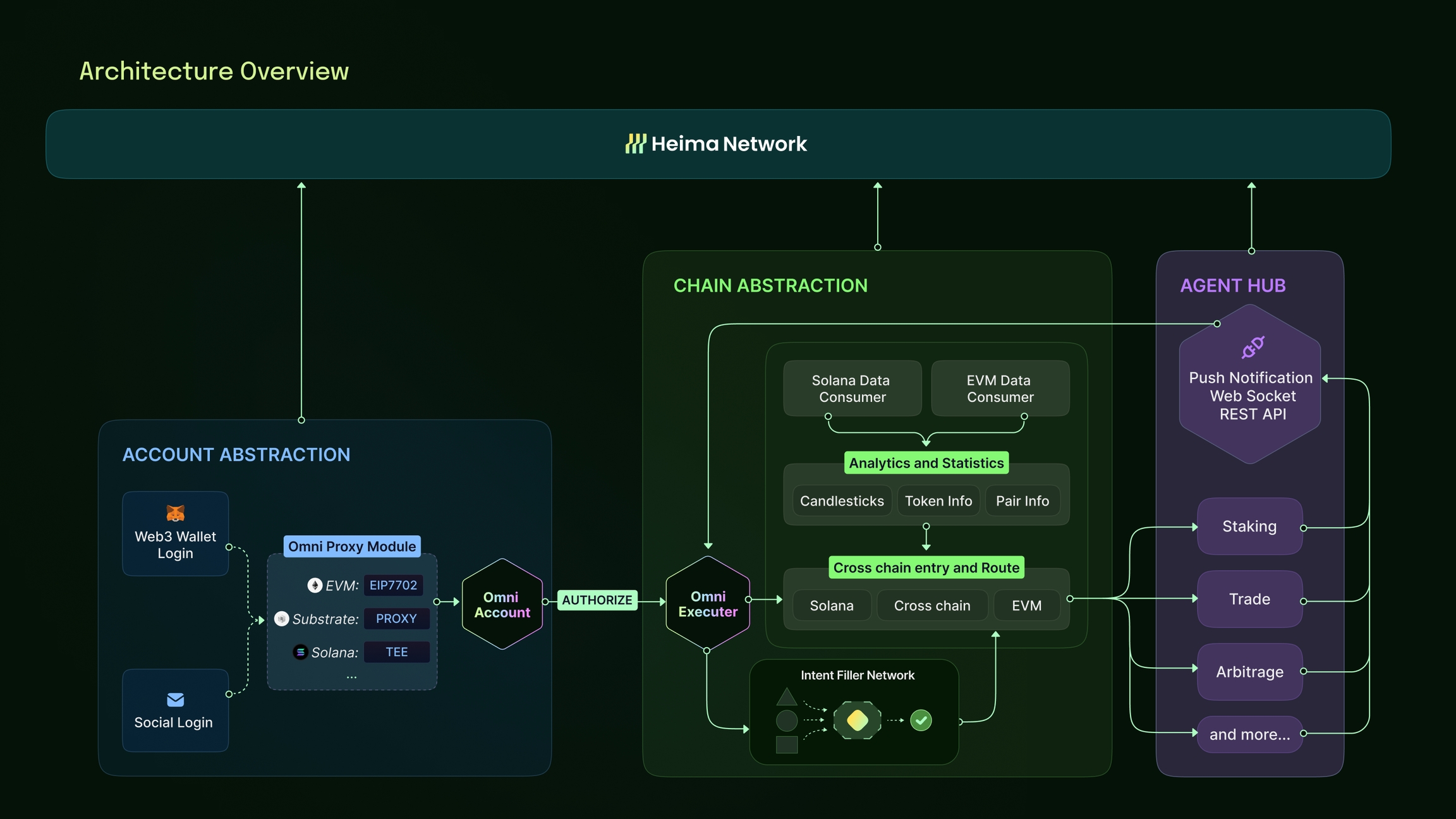Core Concepts
Heima is a full-stack coordination protocol designed to abstract complexity across accounts, chains, and agents. It introduces a unified omni-account layer, cross-chain intent routing infrastructure, a permissionless agent hub, and its programmable Layer 1 blockchain — all tied together by auditable execution and verifiable automation.

Heima Layer 1 Network: The coordination and registry layer that ensures all actors and executions are traceable, verifiable, and cross-domain auditable.
Account Abstraction: Omni-accounts unify user identity across chains and simplify onboarding with Web2-style authentication.
Chain Abstraction: A seamless intent infrastructure removes the need for users to understand or manage different networks.
Agent Hub: A permissionless marketplace for agents and bots to offer services ranging from trading to staking, all tied to intent execution.
Each of these components is designed to be modular yet tightly integrated, creating a chain-agnostic and intent-centric automation ecosystem. This four-pillar approach creates a comprehensive solution where operations across multiple blockchains become transparent and simple for both users and developers.
Last updated
Was this helpful?